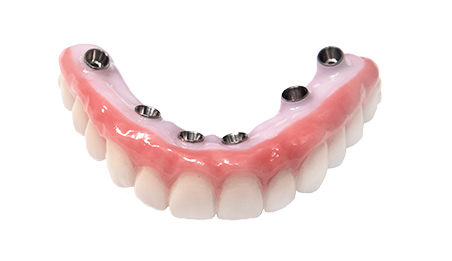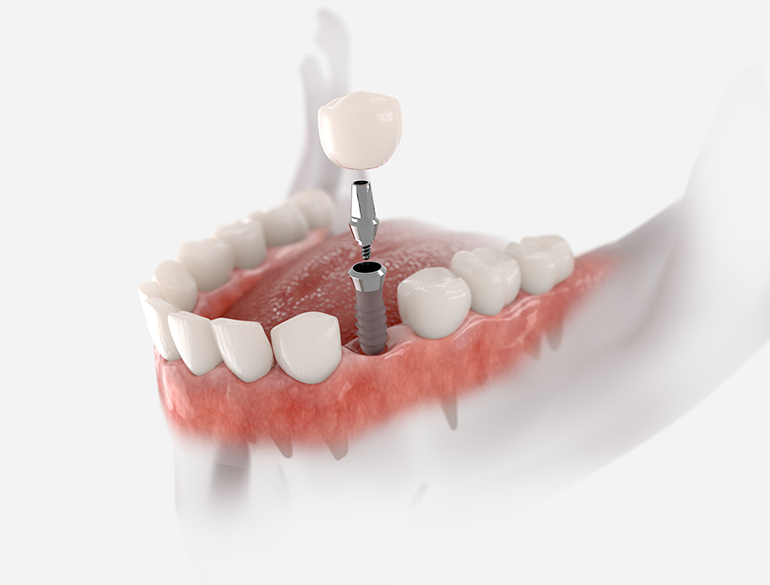Some Known Incorrect Statements About Dental Sense
Some Known Incorrect Statements About Dental Sense
Blog Article
Dental Sense Things To Know Before You Get This
Table of ContentsThe Ultimate Guide To Dental SenseThe Facts About Dental Sense UncoveredThings about Dental SenseThe Best Strategy To Use For Dental Sense
are medical tools surgically implanted right into the jaw to bring back an individual's ability to chew or their appearance. They offer assistance for synthetic (phony) teeth, such as crowns, bridges, or dentures. When a tooth is shed due to injury or disease, an individual can experience difficulties such as rapid bone loss, defective speech, or modifications to chewing patterns that result in discomfort.Dental implant systems consist of an oral implant body and oral implant abutment and might also consist of a joint addiction screw. Dental implant vs bridge. The oral implant body is surgically put in the jawbone in area of the tooth's root. The dental implant joint is usually connected to the dental implant body by the joint addiction screw and expands via gum tissues right into the mouth to sustain the attached man-made teeth
(https://justpaste.it/hj6ob)Framework of The Oral Implant System picking oral implants, talk with your oral supplier regarding the possible advantages and dangers, and whether you are a candidate for the treatment. Points to consider: Your general health is an important consider establishing whether you are a good prospect for oral implants, the length of time it will certainly take to recover, and how much time the implant may remain in place.
Cigarette smoking might impact the recovery procedure and lower the long-term success of the implant. The recovery process for the implant body may take several months or longer, during which time you normally have a momentary abutment instead of the tooth. the dental implant procedure: Thoroughly follow the oral hygiene instructions offered to you by your oral company.
Dental Sense Fundamentals Explained
Implant failure can lead to the need for an additional surgical procedure to deal with or replace the implant system. Recovers the ability to eat Restores aesthetic appearance Helps keep the jawbone from diminishing because of bone loss Preserves the health of the bordering bone and periodontals Aids keep nearby (nearby) teeth stable Boosts top quality of life Damage to bordering all-natural teeth throughout implant placement Injury to the surrounding tissues throughout surgical procedure, such as sinus opening Injury throughout surgery (for instance, fracture of bordering jawbone) Inadequate feature, such as seeming like the teeth do not attack together typically A sensation that the tooth hangs or turning in place arising from an abutment screw loosening Implant body failing (looseness of the dental implant body) as a result of systemic infection, which may be most likely in individuals with unchecked diabetes because of regional infection in bone and gum tissues supporting the implant body due to delayed recovery, which may be a lot more likely in clients that smoke Problem cleaning the gum tissues around the implant, leading to poor oral health Without treatment gum disease Post-surgical tingling as a result of nerve impingement or damage Always inform health treatment providers and imaging professionals that you have dental implants before any magnetic resonance imaging (MRI) or x-ray treatments.
FDA is not mindful of any kind of unfavorable occasions reported for MRI or x-ray procedures with oral implants. Dental implants systems are usually made from products that comply with worldwide agreement requirements of the International Organization for Standardization (ISO) or ASTM International. These requirements have information of what makes a secure product.

An oral implant is a framework that replaces a investigate this site missing out on tooth. With screw-like gadgets, the specialist inserts an implant into the jawbone, and it acts as a support for an artificial tooth, called a crown.
What Does Dental Sense Do?
Some individuals are not eligible for oral implant surgical procedure. It is for oral cosmetic surgeons to operate on people with: intense illnessuncontrollable metabolic diseasebone or soft tissue condition or infectionIf these issues are resolved, a person can have the surgical treatment. In, oral cosmetic surgeons avoid operating on individuals with: If individuals with any of the above undertake dental implant surgical procedure, there is a greater threat of the dental implant falling short.

Dental dental implant surgical treatment is an individualized procedure. It's not the very same for every person. However the following offers a general summary of what you can expect your dental practitioner, oral surgeon, periodontist or prosthodontist to do: Put the implant operatively. Provide you time to recover. Connect the post and last crown, bridge or denture.
Next off, your doctor will carefully put the dental implant into your jaw. Your doctor will reposition your gum tissues and shut the cut with stitches. If your implant is near the front of your mouth, your dentist will make a momentary tooth for you to use until you recover. This way, you won't have a void in your smile while you recuperate.
Dental Sense for Beginners
Your service provider can inform you what to expect in your scenario. Throughout the recovery phase, your jawbone must fuse to the dental implant. This process, called osseointegration, is essential for security and long-lasting success. This process can take anywhere from three to 9 months. In some cases, it might take longer.
When your implant heals, your dental professional can affix the abutment (small port message) and your final restoration (crown, bridge or denture). This typically takes about one hour to complete and might require a second small surgical treatment. You shouldn't feel any kind of pain throughout your oral implant procedure due to the fact that your provider will certainly use medicine to numb your gums.
Report this page